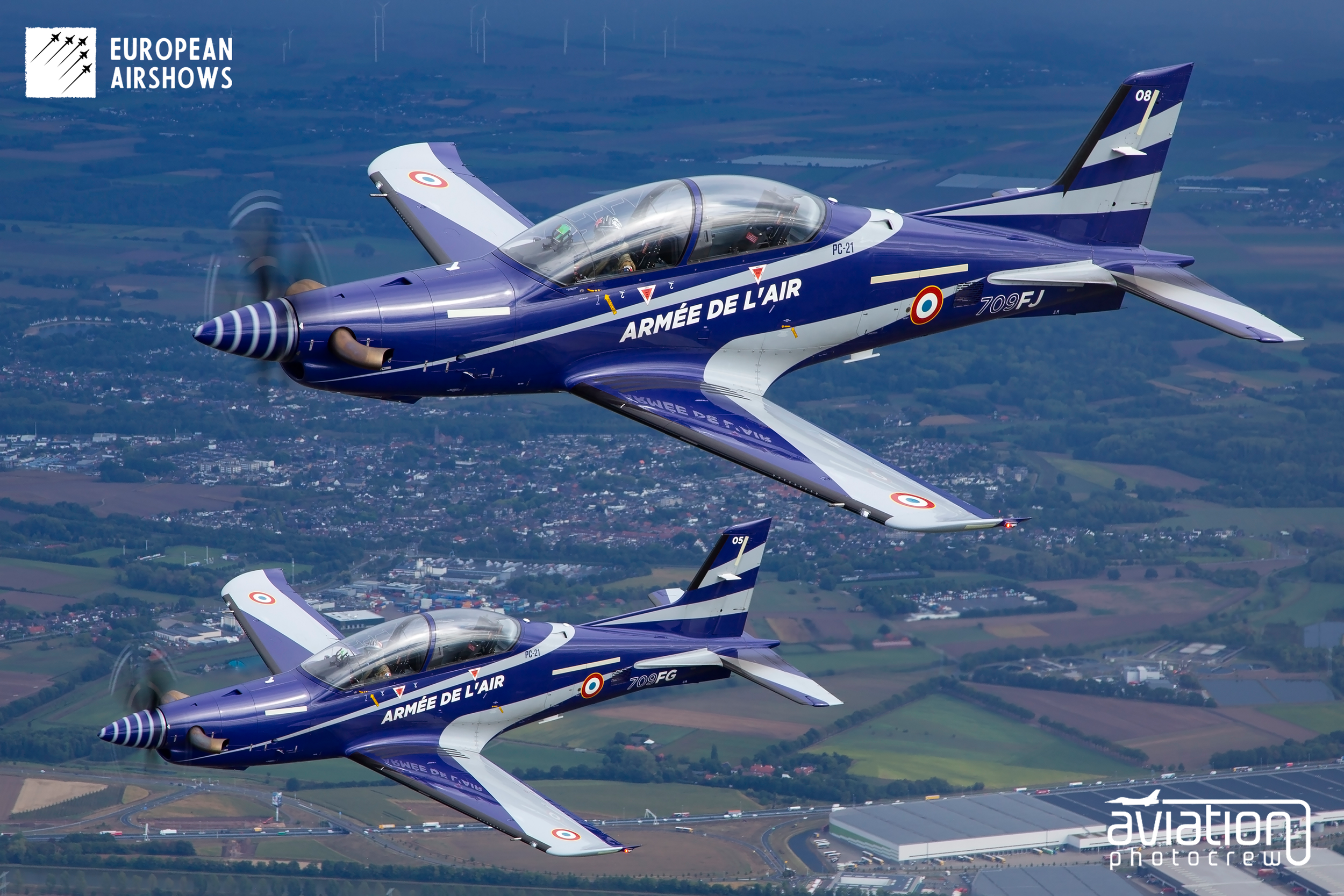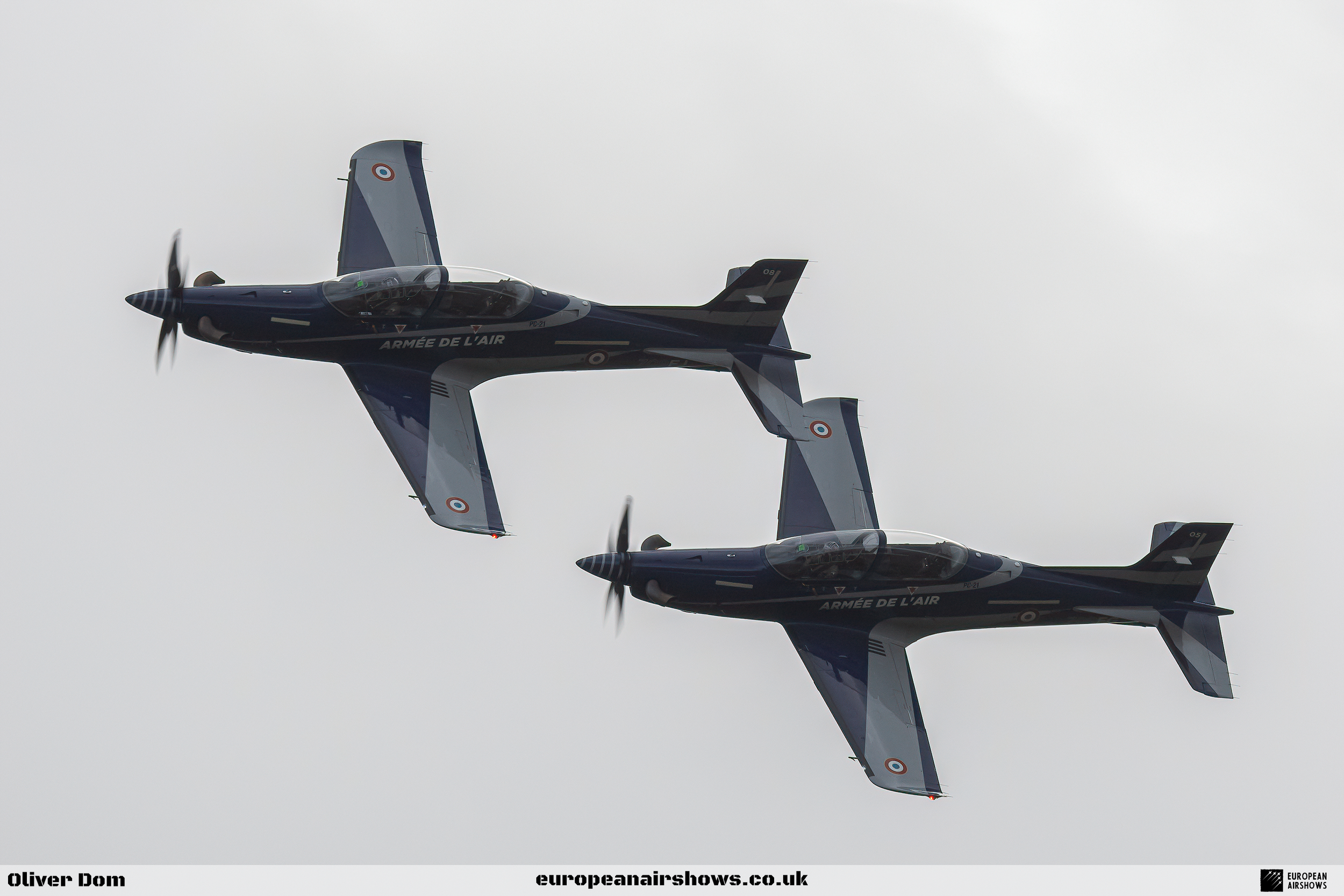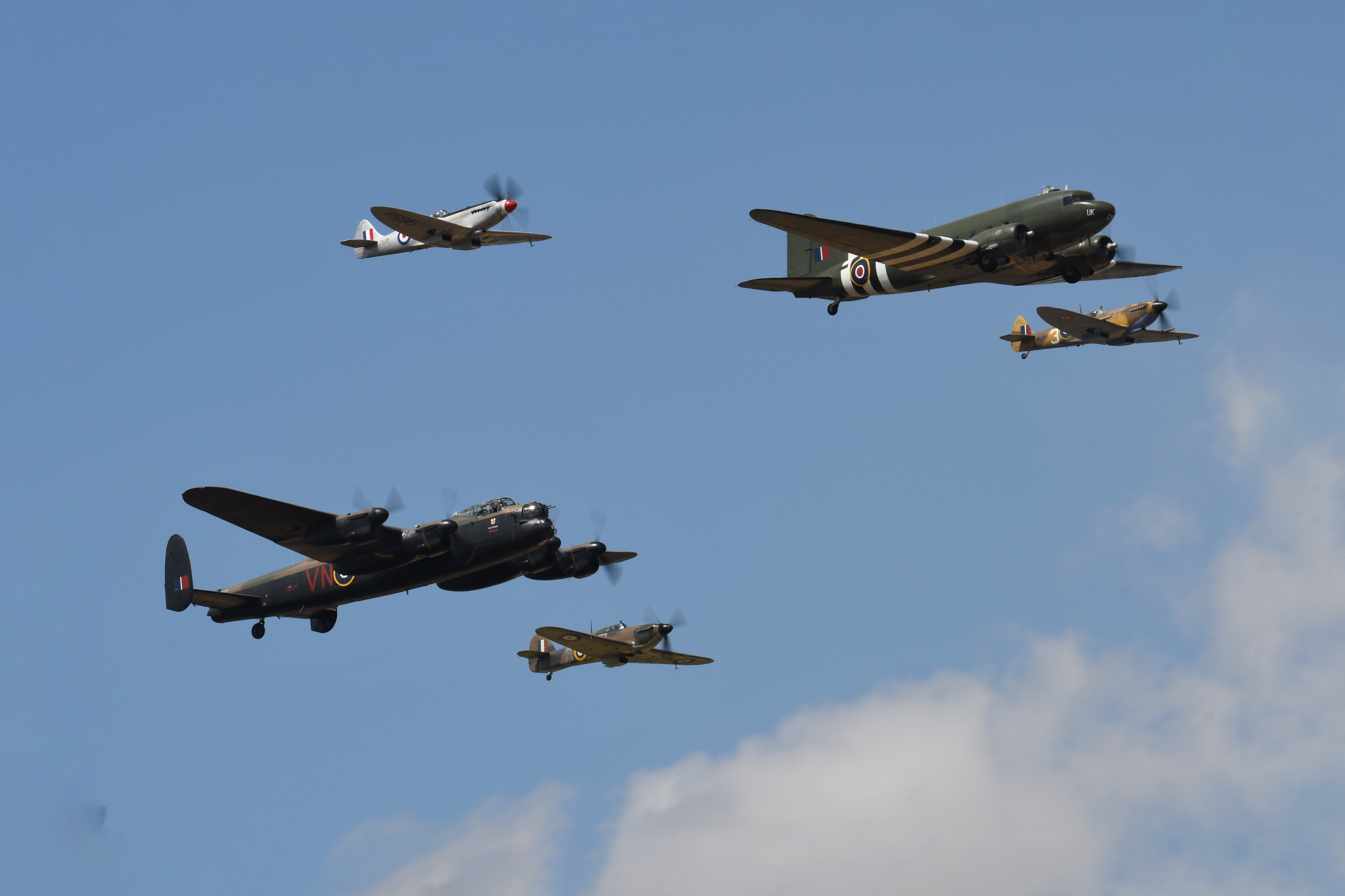Mustang X-Ray
Country
France
Size
2 Aircraft
Base
Cognac-Chateaubernard Air Base
The Mustang X-Ray is a tactical demonstration team of the French Air and Space Force. The team consists of two Pilatus PC-21 advanced single-engine turboprop trainers from BA 709 Cognac Chateaubernard and is made up of 3 instructor pilots (two demo pilots and one coach). The team was created in 2021 and the main task of the team is to show the new PC-21 aircraft which is replacing the Alphajets to the public as well as showcase the work done at the flight school of the French Air & Space Force through a program composed of several formation passes as well as breaks, opposition passes and solo manoeuvres that the students perform during their training.
| Back to Top |
Pilatus PC-21
The Pilatus PC-21 is an advanced single-engine trainer aircraft; it is often referred to by Pilatus as being the "Twenty-first Century Trainer". The type can be applied for various training capacities, including basic flying training, advanced flight training, full mission management training, and embedded simulation/emulation. In order to perform these functions, the aircraft possesses a powerful, flexible, and cost-effective integrated training system; providing sufficient ease of use for inexperienced pilots while posing greater challenges to advanced pilots. According to Pilatus, upon product launch, the PC-21 possessed "superior aerodynamic performance when compared with any other turboprop trainer on the market".
The aircraft features a tandem-seating arrangement (student in front/instructor behind) in a bird strike-resistant glass canopy with all-around vision. The cabin, which is pressurized, is equipped with an On-Board Oxygen Generation System (OBOGS), air conditioning, and Martin-Baker CH16C Zero-Zero ejection seats. The flight controls, which are fully balanced and harmonized, are optimized for ease of operation and overall effectiveness. An anti-g system is also present in order to minimize the effects of high g-forces experienced during tactical training and aerobatic manoeuvres. Pilots are able to spend a greater amount of time concentrating on the aircraft's external situation and upon mission data inputs due to an ergonomic design approach, ease-of-use controls, and clear visual/system data displays. In addition, a full autopilot and civil flight management system are also present.
The PC-21 is powered by a single Pratt & Whitney Canada PT6A-68B turboprop engine of 1,600 shaft horsepower, which drives a five-bladed graphite scimitar propeller manufactured by Hartzell; it has been claimed by Pilatus that the PC-21 possesses speed and climb rates previously normally performed only by jet-powered aircraft. It is also fitted with a high-speed profile wing, rated for manoeuvres up to 8g, complete with hydraulically-assisted ailerons and spoilers which enable the execution of fighter-like rates of roll and other manoeuvres. In order to make the aircraft easy to fly at low speeds, crucial to the advanced trainer role, the PC-21 is furnished with a digital power management system and the rudder control system is equipped with an automatic yaw compensator/suppression system to compensate for airspeed and engine power changes.
A key feature of the PC-21 is the embedded simulation and training suite, which provides cross-platform cockpit emulation, weapons simulation, stores management system, simulated radar and electronic warfare, a tactical situation display, and data link functionality. Key to this is the Mission Support System (MSS), which comprises the Mission Planning System (MPS) and Mission Debriefing System (MBS); data can be loaded and unloaded from these, which is compatible with ground-based stations for pre-flight configuration or post-mission analysis. The integrated mission computer is of open architecture, allowing for third-party modifications and upgrades to take place; software can also be customized to conform to customer preferences. Critical and non-critical software are also deliberately separated.
The cockpit of the PC-21 features a high level of systems integration and conforms to modern avionics standards. The systems of the forward and rear cockpits can be de-coupled between the student and instructor; the instructor may exercise real-time manipulation of the student's displays, sensor performance, and system modes such as to create synthetic air-to-air radar targets, artificial non-safety critical system failures, and controlled data degradation. The aircraft's fully digital glass cockpit features three large colour liquid crystal displays (LCD), one performing as the primary flight display (PFD) and two multi-function displays (MFDs) for system/mission management, in addition to CMC Electronics-provided head-up displays (HUD) for both the pilot and instructor. The trim gauge is the only analogue dial in the cockpit. For control simplicity, a Hands-on Throttle and Stick (HOTAS) control philosophy has been followed. Both the display and control systems present also resemble their counterparts used upon modern front-line combat aircraft for greater realism during training and can be further customized in order to be more representative of specific combat aircraft. The multi-sensor navigation system is capable of operating under a military tactical mode as well as a civil navigation mode.
| Back to Top |






























